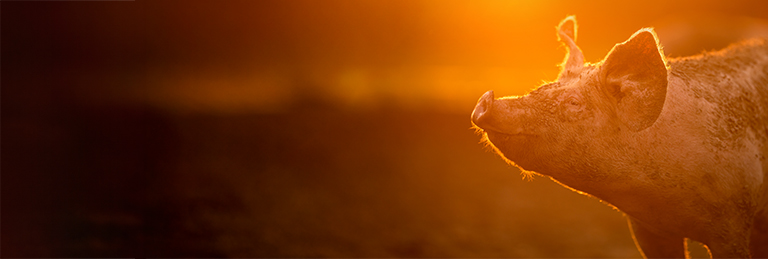EU Maize Plantings Consolidate in 2016
Maize plantings for the 2016/17 crop year are over in the northern hemisphere. The USDA has confirmed a strong maize area increase in the U.S. (the first world maize producer), to 38,1 million hectares (up 7 percent from 2015), above the March estimate of 37,9 million hectares, despite the operators' expectations as to a rebound of soybean plantings and a maize area limited at 37,6 million hectares. Worldwide, 2016/17 maize plantings should trend upwards, mirroring a steady interest in the crop, alongside a still-rising demand. In the southern hemisphere, Argentinian farmers should expand their maize areas by more than 1 million hectares this autumn, due to the radical change in the country's agricultural policy and its export tax removal measure.
Europe presents several trends. First, a 3-percent reduction in the EU-28 grain corn area, both in Western and Eastern Europe. Feed corn area is up slightly (about 1 percent), reflecting an enhanced activity in the livestock sector, as well as higher numbers in Northern Europe. The EU-28 maize area is thus estimated at around 14,7 million hectares in 2016, down 2 percent from 2015. On the other hand, maize is on the rise in Eastern Europe, with grain corn up 7 percent in Ukraine and Russia (to 4,5 and 3 million hectares, respectively). Given their recent currency devaluations, the two countries have improved their competitiveness and their maize export trade has been trending upwards.
As to maize seed production, the EU-28's multiplication programme should reach about 135 000 hectares in 2016, continuing steady compared to 2015. The maize area distribution evens out slightly in favour of Hungary and Romania, going up 21 000 hectares (15 percent) and 20 000 hectares (19 percent), respectively, after the “net cutdowns” of 2015. However, France remains the top European maize seed producer, with 64 500 hectares envisaged for production in 2016/17, albeit marking a 7-percent drop from 2015/16. Yet the country continues to feature an important number of hybrids (1800), which will become available for the 2017 plantings.
Sorghum in Europe: a True Potential
Under the aegis of the F.N.P.S.M.S., Romania will host the first European Congress on Sorghum – the “product” of various French and European operators in the (grain, feed, and seed) sorghum industry; the 1 ½ day-long event will be held on November 3-4, in Bucharest. While Europe's sorghum area is no more than 1 percent of global area, the crop presents real potential, as along with genetic progress, it brings productivity, environmental friendliness, and water use efficiency. Thus this first congress will gather the expertise of all European and international actors in fields such as genetics and agronomy, markets and outlets, promotion, and agricultural policy. If conditions are right and stakeholders get mobilised, the prospect – and the objective – of uniting the various European actors around common promotion and development actions becomes possible. For information about, and registration to, the congress, please go to: www.sorghum-id.com.
Technical Guide on Grain & Feed Corn: the French Expertise in One Publication
The FNPSMS and ARVALIS – the French Plant Institute – have published an updated version of the Grain & Feed Corn Technical Guide, currently available upon request in the following languages: English, French, Polish, Romanian, and Russian. The Polish, Serbian, and Kazakh versions are to be finalised in the following months. The guide is aimed at both promoting high-level genetics in the main maize producing countries in Eastern Europe and acting as a useful tool to effective and competitive maize production.
Nutritional Value of High-Moisture Corn Grain: Latest Experimental Data
In swine feeding, the nutritional value (energy, protein, fat) of high-moisture corn is higher than that of dry ground corn grain. A recent comparison among various samples of high-moisture corn taken on livestock farms in France (Brittany and the south-west) has indicated that despite the different chemical characteristics of the feed, nutritional values are unchanged and high-moisture corn grain is very well assimilated by the animals. High-moisture corn grain also contains more digestible phosphorus than dry ground corn grain. The study in question was aimed at getting a better understanding of the non-digestible (phytate) phosphorus degradation mechanism during storage. It concluded that the content of phytate P starts diminishing after one week of storage in the case of high-moisture ground corn, and after four months, in the case of whole kernel high-moisture corn. An experimental project on dairy cows is currently underway, with rations based on snaplage and alfalfa silage.
Maize and Food Self-Sufficiency. Example of Iran
In the wake of the “Iran deal”, Iran shows high hopes for its agriculture. The country aims at becoming self-sufficient in food and even a “food basket” for the entire Middle East region. Its poultry industry has been strongly supported since 2012, when the country recorded an animal protein crisis. Thus Iran has become self-sufficient in poultry and has even developed its exports, since 2014. As to its cattle industry, the national priority is the dairy sector, which has an important domestic market and good export outlet potential. Iran's dairy system is intensive, with rations based on maize and soybeans and dairy farms of at least 500 head. Maize is therefore a key crop for this country's agriculture strategy, with about 600 000 hectares planted every year, of which 50 percent for the grain market and 50 percent for the feed market. Obviously, there is strong local interest in using high-performance seeds that are both productive and water-use efficient.







